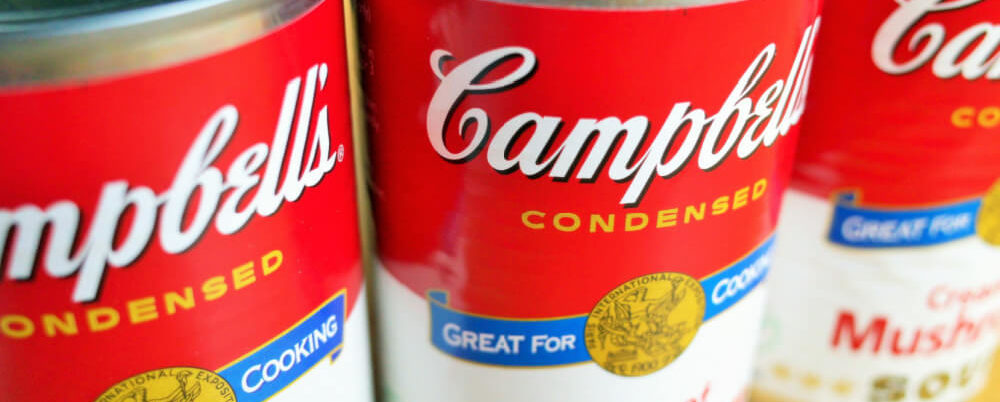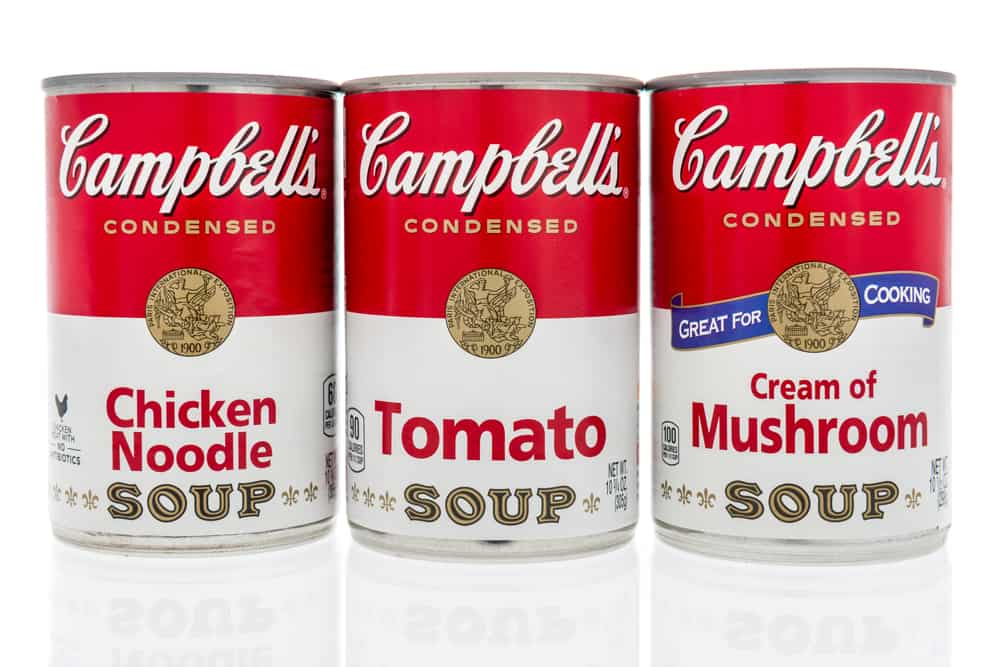Can you eat campbells soup after the expiration date?
Campbell’s Soup has been a household name for over a century, and their canned soup varieties are enjoyed worldwide. But, just like any other perishable food item, canned soup also has a limited shelf life. In this article, we’ll dive into the details of the shelf life of Campbell’s Soup, including how long you can store it for, how to properly store it, and how to determine if it has gone bad.

Factors That Affect the Shelf Life
Canned soups like Campbell’s have become a pantry staple in many households due to their convenience and long shelf life. However, it’s essential to ensure that they are consumed before their expiration date to guarantee their safety and quality. The expiration date is typically indicated on the can and represents the date until which the soup is guaranteed to remain safe and retain its quality. Several factors determine the shelf life of Campbell’s soup, including acidity, preservatives, storage conditions, and packaging.
One of the essential factors that determine the shelf life of Campbell’s soup is its acidity level. Soups with higher acidity levels like tomato soup tend to have a shorter shelf life compared to soups with lower acidity levels. As a result, tomato soup typically has a shelf life of around 18-24 months, while chicken or vegetable soup can last up to five years.
Preservatives are another crucial factor that affects the shelf life of Campbell’s soup. Canned soups often contain chemical preservatives like BHA and BHT that prevent the growth of bacteria and extend the soup’s shelf life. These preservatives work by slowing down the oxidation process that causes the food to spoil. Campbell’s soup uses preservatives like citric acid, potassium chloride, and sodium bisulfite to keep the soup fresh for an extended period.
Storage conditions also play a significant role in determining the shelf life of Campbell’s soup. Factors like temperature, humidity, and exposure to light can affect the soup’s quality over time. Ideally, canned soups should be stored in a cool, dry place away from direct sunlight. Warmer temperatures and high humidity levels can cause the can to rust, and this can also compromise the soup’s quality.
Lastly, the type of packaging used for Campbell’s soup has a significant impact on its shelf life. Metal cans are a popular packaging option for soups since they provide an airtight seal that protects the contents from external elements. Metal cans also block out light, which helps to prevent the breakdown of vitamins and minerals in the soup. This packaging option is especially useful for long-term storage since the soup’s quality can be maintained for an extended period.
In conclusion, several factors affect the shelf life of Campbell’s soup, including acidity, preservatives, storage conditions, and packaging. By understanding these factors, you can ensure that your canned soups remain safe and of high quality, even after their expiration date. Remember to store your soups in a cool, dry place and avoid exposing them to direct sunlight. Additionally, check the expiration date on the can before consuming the soup to ensure that it’s still safe to consume.
Storage Conditions to Maximize Shelf Life
Proper storage conditions are crucial for maximizing the shelf life of Campbell’s Soup and ensuring its quality. Whether you’re preparing for an emergency or simply stocking up your pantry, knowing how to store your canned soups correctly is essential. Here are some tips to help you keep your Campbell’s Soup fresh for longer:
Temperature is a significant factor that affects the quality and shelf life of Campbell’s Soup. Cans of soup should be stored in a cool and dry place, with a temperature not exceeding 70°F. If you have refrigerated soup, it should be stored at 40°F or below. Exposing your canned soup to high temperatures can cause the can to rust and degrade the soup’s quality over time.
Humidity is another factor that can negatively impact the shelf life of Campbell’s soup. High humidity levels can cause metal cans to rust, which can lead to leaks, contamination, and ultimately spoilage. Therefore, it is essential to keep your soup in a dry area and make sure that the can remains intact.
Light exposure is also a crucial factor that affects the shelf life of Campbell’s Soup. Sunlight or other forms of intense light can penetrate the packaging of the soup and cause the food to break down rapidly. To avoid this, it is recommended that you store canned soups in a dark area away from direct light.

Lastly, the storage container plays a significant role in maintaining the quality and shelf life of Campbell’s Soup. Metal cans are an excellent option for storing soup due to their airtight seal and ability to block out light. However, if the can is damaged or dented, it can compromise the soup’s quality and shelf life. Always make sure that the cans are in good condition before purchasing them.
In conclusion, proper storage conditions are crucial for maximizing the shelf life of Campbell’s Soup. To keep your soup fresh for longer, make sure to store it in a cool and dry area, away from direct sunlight, with a temperature not exceeding 70°F. Additionally, always check the storage container to ensure that it’s in good condition and that there are no signs of rust or damage. By following these tips, you can enjoy your Campbell’s Soup for an extended period without compromising its quality.
Best By Dates on Cans of Campbell’s Soup
Best By Dates are a common feature on cans of Campbell’s Soup, and they are printed on the label as a way to inform consumers of the time period during which the product is at its peak quality. These dates provide insight into the shelf life of the soup and the approximate amount of time that the product will remain fresh and safe for consumption.
It is important to pay attention to these dates when purchasing and consuming Campbell’s Soup because consuming the product after the best by date has passed can have implications for the quality and safety of the food. While it is possible for the soup to remain edible after the best by date, the nutritional quality and flavor may begin to degrade over time. Furthermore, consuming expired soup can increase the risk of food poisoning and other health concerns.
It is also important to note that the accuracy of these dates can be affected by a variety of factors, including storage conditions and handling. If the cans of soup are not stored properly or are subjected to extreme temperatures, they may spoil faster than anticipated and the best by date will no longer be valid.
To determine whether the soup is still safe to consume, it can be helpful to use sensory cues as a gauge of the quality. For example, if the soup has an unusual odor or appearance, it may be a sign that the food has gone bad and should be discarded. Similarly, if the soup tastes off or has an unusual texture, it is likely that the food has started to spoil.

In summary, Best By Dates are an important tool for consumers to use when purchasing and consuming cans of Campbell’s Soup. They provide an insight into the shelf life of the product and its approximate freshness, but additional factors like proper storage conditions and sensory cues can provide a more accurate indication of the soup’s edibility and quality.